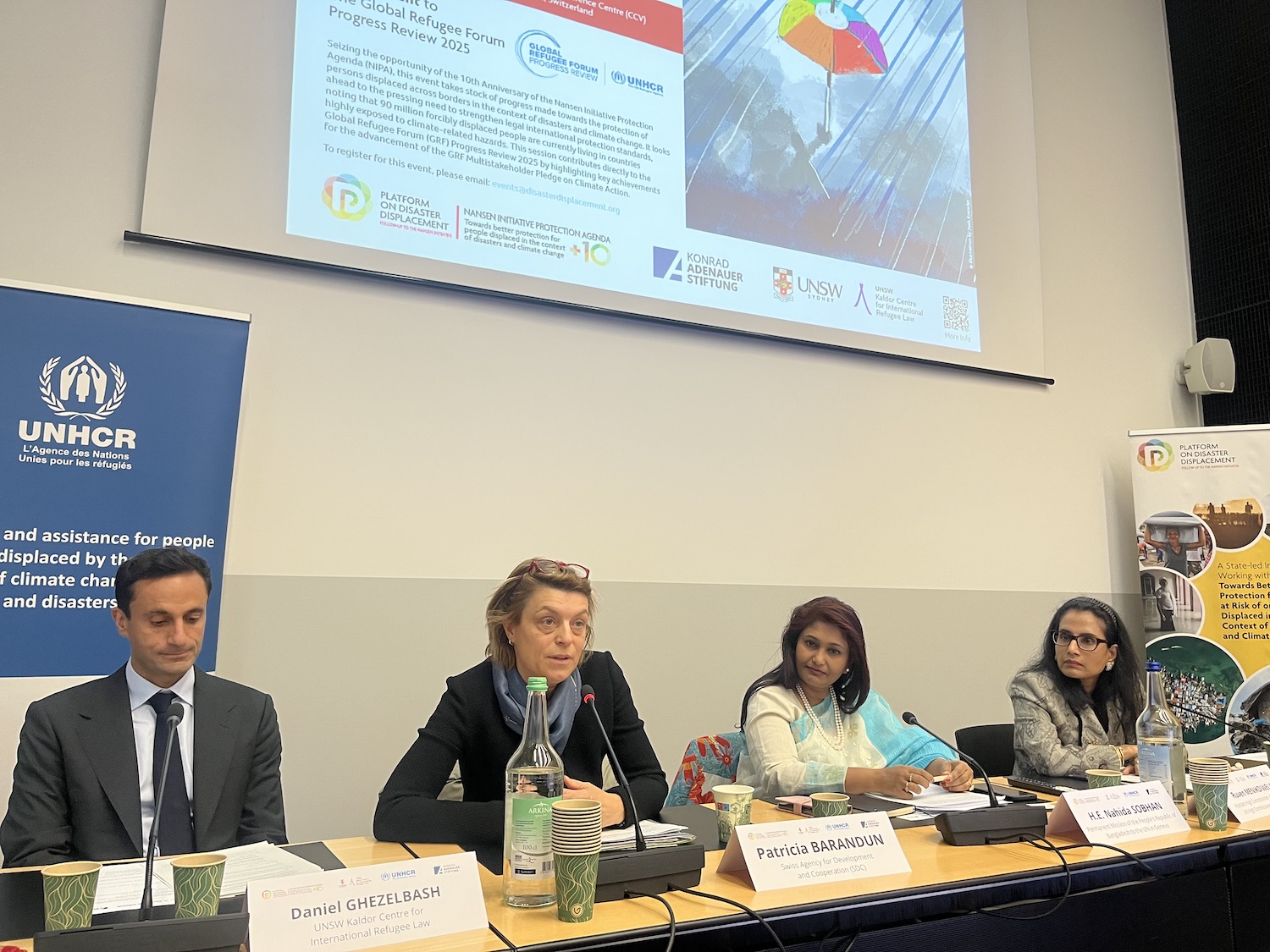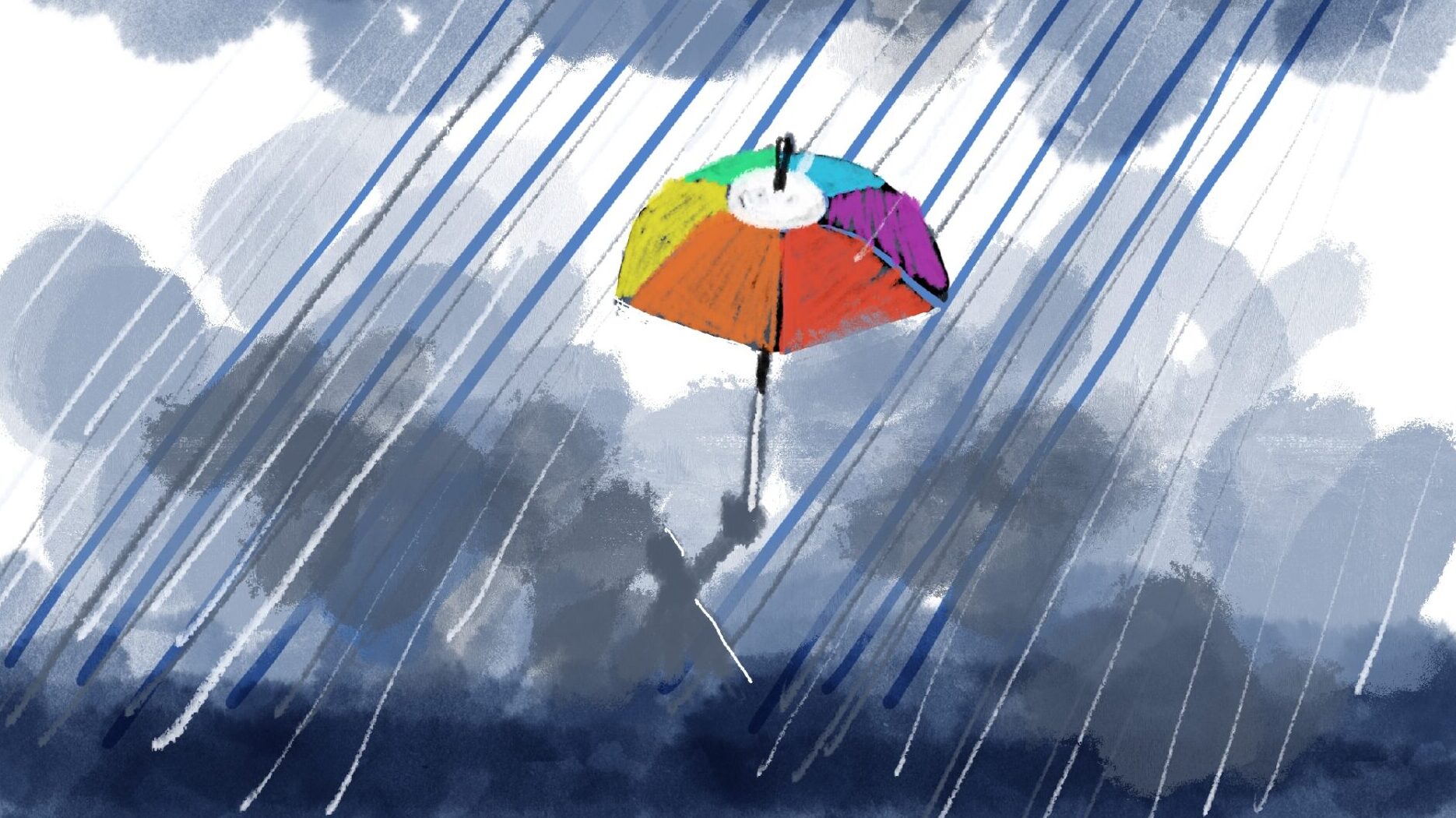Celebrating International Day for Disaster Risk Reduction 2021
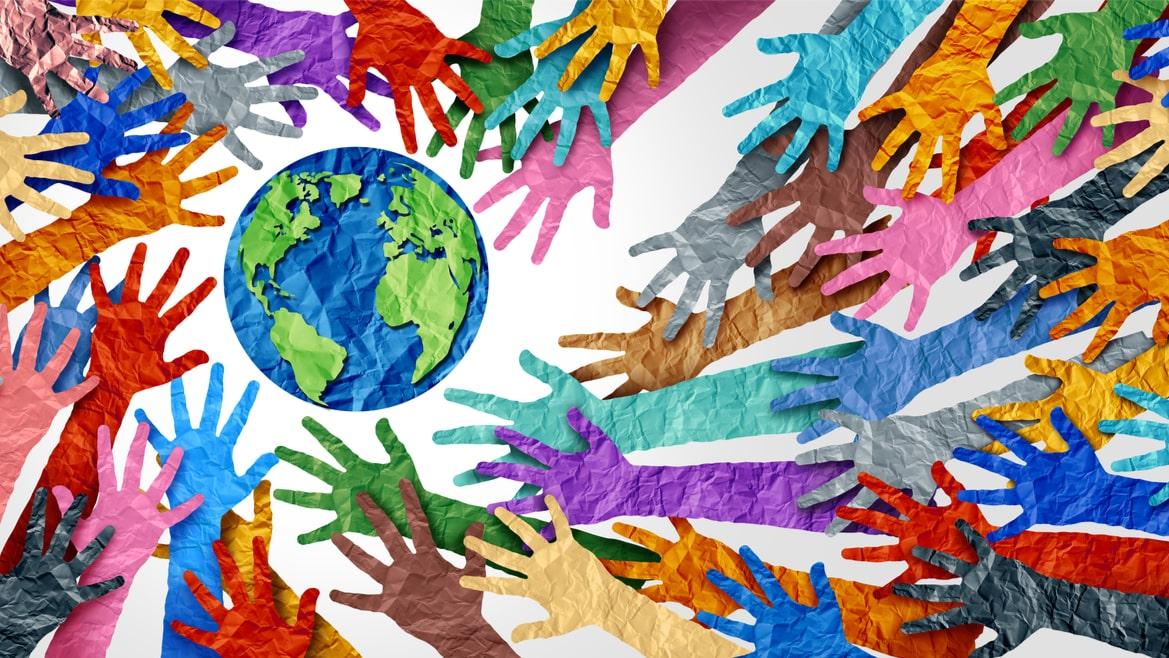
Every year, 13 October is International Day for Disaster Risk Reduction (IDDRR). Why do we need a day to mark the importance of DRR? The Sendai Framework for DRR 2015-2030, a key international policy framework, sets out seven targets for States to achieve before 2030, with the support of other stakeholders. Each IDDRR is an opportunity to draw attention to those targets and the work being done to achieve them.
The PDD regularly participates in the Sendai Seven Targets Campaign developed by the United Nations Office for Disaster Risk Reduction (UNDRR).
In 2017, we asked residents of Geneva “What day is October 13th?” Watch the video clip of their responses and estimates about disaster displacement.
In 2020, we recorded an online presentation and Q&A on the Words into Action Guidelines on Disaster Displacement, with UNDRR, the Norwegian Refugee Council (NRC) and the Internal Displacement Monitoring Centre (IDMC) – all of which is still relevant today.
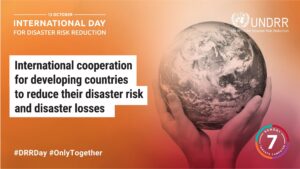 This year, the Campaign focuses on Target F – International cooperation for developing countries to reduce their disaster risk and disaster losses. This target requires international organizations to work with the governments and authorities of developing countries to support their national DRR activities, ensuring the full implementation of the Sendai Framework by 2030. A critical aspect of reducing disaster risk and disaster losses is attending to the need to incorporate displacement considerations into strategies, policies and planning. The PDD and its partners have developed tools to enable governments to do just that.
This year, the Campaign focuses on Target F – International cooperation for developing countries to reduce their disaster risk and disaster losses. This target requires international organizations to work with the governments and authorities of developing countries to support their national DRR activities, ensuring the full implementation of the Sendai Framework by 2030. A critical aspect of reducing disaster risk and disaster losses is attending to the need to incorporate displacement considerations into strategies, policies and planning. The PDD and its partners have developed tools to enable governments to do just that.
Putting Words into Action on disaster displacement

More than two years ago, the final version of the Words into Action Guidelines – Disaster displacement: How to reduce risk, address impacts and strengthen resilience was officially launched during the Global Platform for Disaster Risk Reduction 2019. The Words into Action Guidelines are part of a UNDRR series of guidelines and provide guidance for governments on how to include disaster displacement-related provisions in their national and local disaster risk reduction planning.
In order to further support governments, as well as other stakeholders, in 2021 NRC, UNDRR and the PDD launched two new online tools based on the Words into Action Guidelines: a Checklist and an eLearning course.
The Checklist is available in English and Spanish, and will soon be translated into French. The interactive eLearning course immerses users in an engaging self-directed learning experience that provides information on how to reduce displacement risk, address its impacts and strengthen resilience. It is also available in English and Spanish, and will soon be translated into French.
Using the Words into Action toolkit – from self-paced eLearning to capacity building workshops
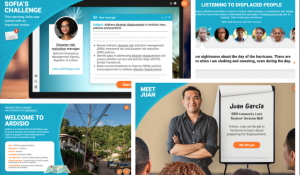
The Words into Action toolkit – the Guidelines, the Checklist and the eLearning – is being rolled out worldwide. NRC and the PDD, with funding support from the government of Germany, work together to offer courses to interested governments and other stakeholders. In January 2021, government representatives from all seven member countries of the Central American Coordination Center for the Prevention of Natural Disasters (CEPREDENAC) took part in a first regional pilot of the eLearning tool. More recently, the toolkit was disseminated at a workshop held by CAPRADE (Comité Andino Ad Hoc de Prevención de Desastres) and supported by the PDD, to train more than 80 government representatives in the Andean region. Outside the Americas, colleagues from the European Union as well as partners from the Global Network of Civil Society Organisations for Disaster Reduction have benefitted from moderated sessions to support their self-paced eLearning.
The toolkit, and in particular the eLearning tool, was also presented at a recent Regional Dialogue on Human Mobility, Climate Change and Disaster Risk Reduction of the Intergovernmental Authority on Development (IGAD) in September 2021, and a wider rollout of the eLearning, including facilitated training, will take place soon in the IGAD region.
Working with the IGAD Secretariat and Member States
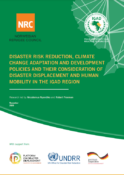
The Horn of Africa recently experienced one of the wettest rainy seasons in 40 years, destroying livelihoods and forcing people to move.
Because of this, IGAD Member States have recognized the need to develop a coordinated and protection-centered response to disasters that allows people to move in order to mitigate the worst effects of natural hazards, including through the recent endorsement of a Free Movement Protocol, which permits movement across regional borders ‘in anticipation of, during or in the aftermath of disaster’. In addition, IGAD members have identified the need to protect against future displacement through effective disaster risk reduction, climate change adaptation, and development strategies.
The PDD and partners work closely with States in the IGAD region to strengthen the integration of displacement and protection considerations into national and regional policies. In particular, a report commissioned by NRC and IGAD, and supported by PDD and UNDRR, analyses the extent to which the prevention of displacement, the protection of the displaced, and the facilitation of durable solutions have been integrated into existing national and regional policies in the IGAD region.
What next?
As disasters become more frequent and severe, especially in the context of climate change, the PDD will continue to cooperate with partners to support governments and other stakeholders to reduce their disaster risk and disaster losses, and progress towards full implementation of the Sendai Framework. Anyone interested in guidance and assistance on how to implement the Words into Action Guidelines on Disaster Displacement in their country or region, or interested in the Checklist and eLearning course, including with translating them into other languages, is invited to contact info@disasterdisplacement.org and nrcgeneva.policy@nrc.no to enquire about possibilities of support!
Header photo © Lightspring/Shutterstock
Useful Links
Download the Guidelines
 Loading...
Loading...
Download the Checklist
 Loading...
Loading...
Download the IGAD mapping
 Loading...
Loading...
Learn more about PDD’s work on DRR in our Workplan 2019-2022
